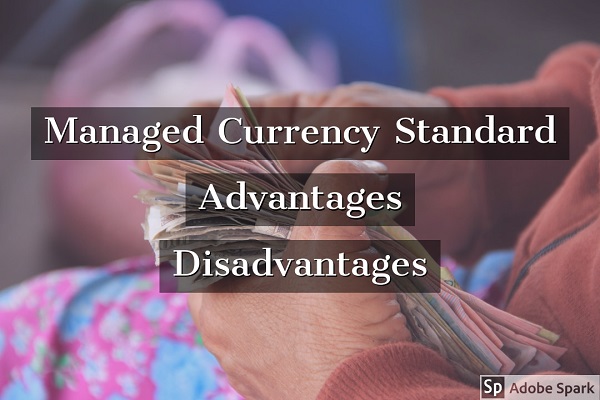Managed Currency Standard or Modern Monetary System –
Paper money has a very important role in our modern economic or monetary system. The term paper money only applies to the notes issued by the Government or by the Central Bank of the country. In the starting when notes were first introduced they were they were backed by an equal amount of gold or silver coins which can be demanded any time and the paper notes were just representing these metallic coins. This type of paper notes or money (which were backed up) were called Representative Paper Notes or Representative Paper Money. It is also called Convertible Paper Money. Representative Paper Money has become a thing of past as it is not found anywhere in the world now.
The paper money which is in circulation now a days is not fully backed up by gold or silver, and is called Fiat Money. It is also called Inconvertible Paper Money.
Convertible Paper Money or Full Reserve System –
Convertible Paper Money is that type of paper money which is issued and fully backed up with the reserves of an equal amount of gold or silver by the issuing authority (government or the Central Bank of the country). This type of system was called ‘Full Reserve System‘.
Paper money remained convertible for a long time, but as time passed, it was thought that a cent percent reserve against the issued paper money or currency was not needed and only a proportion of 30 to 50 percent was enough to convert the notes presented for conversion into gold or silver. That’s why the ‘Proportional Reserve System‘ was adopted. According to this system, the issuing authority has to keep a 30 to 50 percent of the total amount of notes issued as gold reserves. It was based on the fact that people found notes very convenient to use as compared to the gold or silver coins and presenting them to the issuing authority. So, the full backing of gold was not required. In India, the ‘Proportional Reserve System’ was adopted in 1927 and it was abandoned in 1957.
Inconvertible Paper Money or Fiat Money –
It is that type of money which is not backed up by the reserves of an equal amount of gold or silver and that’s why it can’t be converted in gold or silver. So, when paper money is not convertible, the issuing authority is not responsible to convert the paper money or notes into gold or silver. It is also called ‘Fiat Money‘. This is the money which is in circulation now in almost all countries of the world.
Minimum Reserve System –
After the ‘Proportional Reserve System’ was abandoned a new system called ‘Minimum Reserve System’ came into existence. India, adopted ‘Minimum Reserve System’ in 1957 after abandoning ‘Proportional Reserve System’. According to this system, Reserve Bank of India was required to keep a minimum amount of gold and other approved securities (dollar, pound sterling etc.) of the value of 200 Crore Rupees, out of which gold must not be less than the value of 115 Crore Rupees. On the basis of this Minimum Reserve System, Reserve Bank of India (RBI) could issue any amount of or any number of notes or currency according to the economic conditions of the country.
Advantages of Managed Currency Standard –
1. Quantity of money can be easily increased –
The main advantage of this is that the quantity of money can be easily increased according the requirements of the money. When any country is under the gold standard it can’t increase its quantity of money, to increase the quantity of money its gold reserves must increase which is very difficult in most situations considering the fact that gold is limited.
But under the fiat currency standard, it is possible to increase quantity of money as it disconnects the creation of money from the gold, to expand the quantity of money for promoting economic activities or growth.
2. Helpful to overcome Depression –
In time of depression it helps to increase the aggregate demand by increasing the money supply in the economy and it helps the economy to reach the state of full employment.
Money supply can’t be increased under the gold standard without increasing the gold, so this creates a problem as we all know gold is limited. That’s why paper currency standard is helpful to overcome depression.
3. Helpful to overcome Inflation –
When there is inflation in the economy the government can easily withdraw money from the economy by making changes in budget, monetary policies and fiscal policies. But these changes can only be possible under paper currency standard.
4. Helpful in situations of Crisis –
In times of crisis such as war, drought, flood or any other natural disaster, every country needs a lot of money which can only be created under the paper currency standard.
5. It is very Economical –
Paper currency standard is very economical as compared the other metals. Price of paper is very very low compared the prices of metals. It is easy to print paper money as compared to making metallic coins and also it costs less to print than making metallic coins.
Disadvantages of Managed Currency System –
1. It creates foreign exchange instability –
Due to the rapid changes in the foreign exchange rate, the prices of the imports and exports of a country changes continuously and rapidly which affects the earning of a country from foreign countries. This instability is very dangerous for the countries which mostly depend on foreign trade.
2. It can create internal economic instability –
The over issue of the paper currency in a country can lead to inflation in the economy, which in turn creates the internal instability in the economy.
So, the paper currency can lead to both internal and external instability, if not managed properly by the issuing authority.
